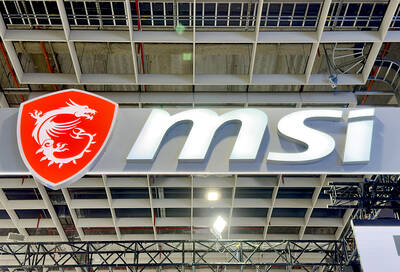China may end the yuan's decade-old fixed exchange rate to the US dollar, allowing its currency to strengthen and slow export-led economic growth and inflation, analysts and economists said, adding that they expect China to revalue the yuan by the end of the year.
China, which pegged its currency to the dollar in 1994, first said in March 2002 it may consider linking the yuan to a basket of currencies as it has had to buy US dollars to keep a value of 8.3 yuan per dollar, putting more money into circulation.
"China needs exchange rate flexibility," said Fred Hu (
"The economy is booming, inflation is heating up and money and credit growth is so fast. That implies China would be better off to do this sooner rather than later," he said.
China's economy, the world's sixth largest, will grow 8 percent this year, from an estimated 8.6 percent last year, the fastest among the world's top 10 economies, economists said.
Federal Reserve Chairman Alan Greenspan said on Dec. 11 China's increased dollar-buying to preserve the peg was "overheating" the economy. The next day, the Beijing-based statistics bureau said on its Web site inflation accelerated to 3 percent in November, the fastest in 6 1/2 years.
"Rising inflation is ultimately the most likely trigger for a shift in the exchange-rate regime," said Harvard University Professor Kenneth Rogoff, the former chief economist of the International Monetary Fund. "There are strong pressures" for the yuan to appreciate.
Traders have been increasing bets that China will allow the yuan to strengthen through freely traded forward contracts, which imply the yuan would rise to 7.847 in a year's time if not pegged.
China will wait until at least the third quarter to widen its band, analysts said. On average, they predicted a widening of 3.1 percent either side of the fixed rate, compared with the current 0.3 percent.
Analysts also said China will adopt a peg against a basket of currencies, including the dollar.
"The chances are high for a move by the spring," Jim O'Neill, Goldman's head of global economic research, wrote in a Dec. 8 report. Goldman in June predicted China would allow the yuan to move by 2.5 percent above or below the fixed rate by year-end and by 5 percent within a year.
China's M2, the broadest measure of money supply, expanded faster than the central bank's 18 percent targeted growth rate in each of the first 11 months of this year. China does not publish figures on how much it spends to maintain the currency peg, a central bank spokesman said.
Though Chinese officials including Central bank Governor Zhou Xiaochuan (
"It's very unlikely China would change its currency arrangement in 2004," said Mike Newton, a currency strategist in Hong Kong at HSBC Holdings Plc, the biggest trader of Chinese yuan, according to Euromoney magazine. "I can't see any upside for taking such a step" before China eases restrictions on the flow of capital.
China may allow the yuan to move 1 percent above and below the pegged rate, said Frank Gong, chief strategist at Bank of America Corp in Hong Kong, who used to work for the Federal Reserve writing research reports for the Federal Open Market Committee.
"They may widen the band, most likely in September, just before the US election," Gong said. Then, "US politicians can claim some kind of victory. That would be a politically right time to do it."

Meta Platforms Inc offered US$100 million bonuses to OpenAI employees in an unsuccessful bid to poach the ChatGPT maker’s talent and strengthen its own generative artificial intelligence (AI) teams, OpenAI CEO Sam Altman has said. Facebook’s parent company — a competitor of OpenAI — also offered “giant” annual salaries exceeding US$100 million to OpenAI staffers, Altman said in an interview on the Uncapped with Jack Altman podcast released on Tuesday. “It is crazy,” Sam Altman told his brother Jack in the interview. “I’m really happy that at least so far none of our best people have decided to take them

BYPASSING CHINA TARIFFS: In the first five months of this year, Foxconn sent US$4.4bn of iPhones to the US from India, compared with US$3.7bn in the whole of last year Nearly all the iPhones exported by Foxconn Technology Group (富士康科技集團) from India went to the US between March and last month, customs data showed, far above last year’s average of 50 percent and a clear sign of Apple Inc’s efforts to bypass high US tariffs imposed on China. The numbers, being reported by Reuters for the first time, show that Apple has realigned its India exports to almost exclusively serve the US market, when previously the devices were more widely distributed to nations including the Netherlands and the Czech Republic. During March to last month, Foxconn, known as Hon Hai Precision Industry

PLANS: MSI is also planning to upgrade its service center in the Netherlands Micro-Star International Co (MSI, 微星) yesterday said it plans to set up a server assembly line at its Poland service center this year at the earliest. The computer and peripherals manufacturer expects that the new server assembly line would shorten transportation times in shipments to European countries, a company spokesperson told the Taipei Times by telephone. MSI manufactures motherboards, graphics cards, notebook computers, servers, optical storage devices and communication devices. The company operates plants in Taiwan and China, and runs a global network of service centers. The company is also considering upgrading its service center in the Netherlands into a

Taiwan’s property market is entering a freeze, with mortgage activity across the nation’s six largest cities plummeting in the first quarter, H&B Realty Co (住商不動產) said yesterday, citing mounting pressure on housing demand amid tighter lending rules and regulatory curbs. Mortgage applications in Taipei, New Taipei City, Taoyuan, Taichung, Tainan and Kaohsiung totaled 28,078 from January to March, a sharp 36.3 percent decline from 44,082 in the same period last year, the nation’s largest real-estate brokerage by franchise said, citing data from the Joint Credit Information Center (JCIC, 聯徵中心). “The simultaneous decline across all six cities reflects just how drastically the market